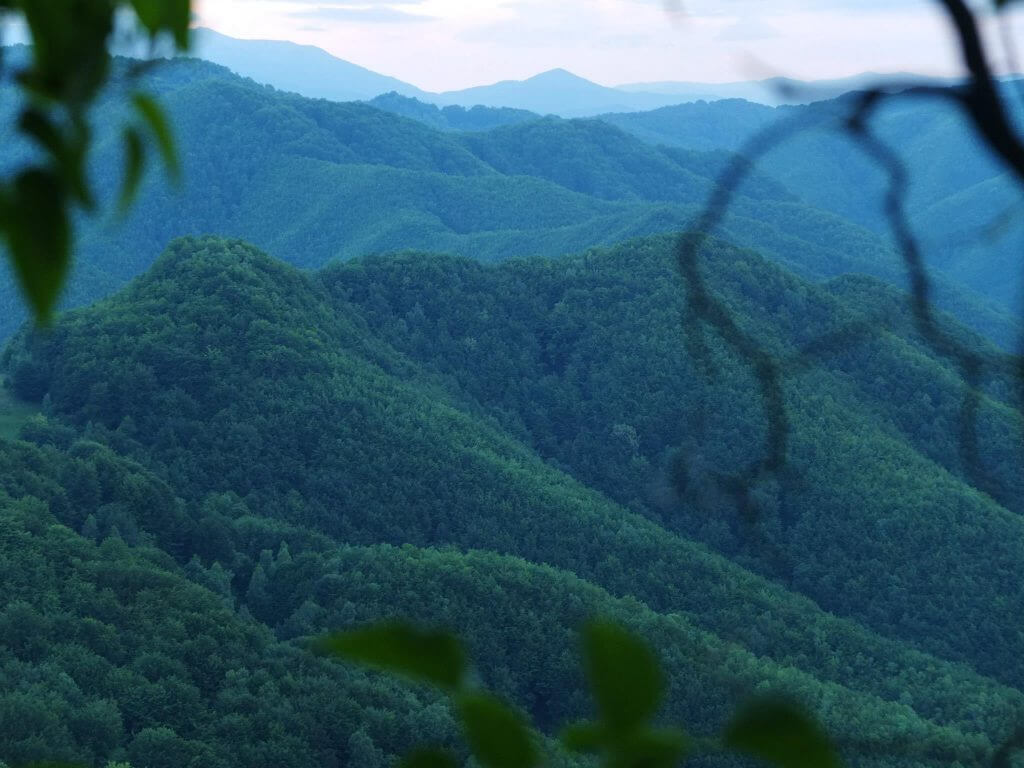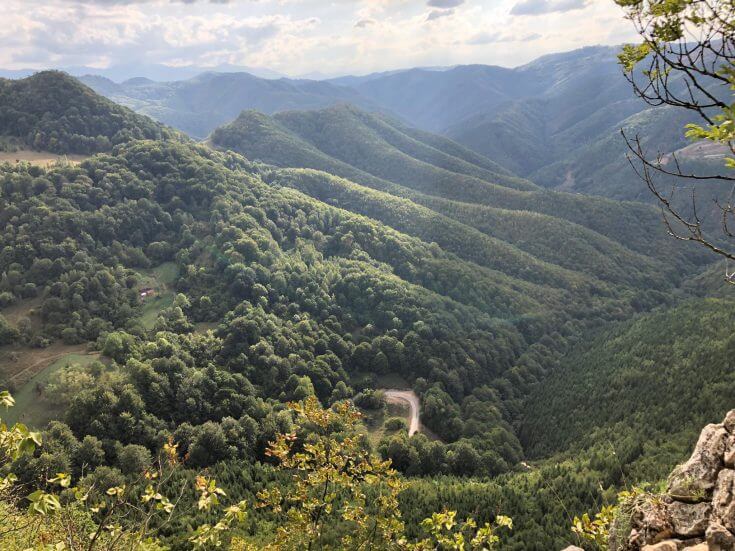Between the Luncani Valley and the Ponor Valley, the peak of the Red Stone was used as a emplacement for one of the Sarmizegetusa‘s fortresses, defending the access from Strei Valley to the capital of Dacia.
The fortress itself, located on the top, is composed of two juxtaposed enclosures. The main one, made of stone blocks, in a typical Dacian technique, is smaller and constitutes the acropolis. Inside it was discovered a strange construction, similar to the famous Popeşti palace, but substantially different from it. Only the stone foundation in a single row of blocks is preserved, which designates two rooms in the enfilade, one entering quadrangle and the other in the form of an apse. Around these rooms, another foundation also continues in the form of an apse. It would seem to be the foundation of a portico. Undoubtedly, the roof should have a more complex form joining the two slopes characteristic of a rectangular construction in length, with the rounding of the terminal apse. The wall of the fortress had towers at the corners and a gate tower located relatively median on one of its sides.

Beyond this rectangular enclosure, there was a long cellular building on the narrow terrace between the gap and the wall of the enclosure. Only the stone foundations are preserved, so it can be assumed that the elevation was wooden and undoubtedly constitute a rarity that we no longer encounter in this form in another Dacian fortress.
To the south of the fortress, in a block of flats lay the second fortress, much larger, quadruple, with the wall replaced by a wave of stone boulders. But this wave had ashlar towers at the corners and an ashlar tower controlled the entrance. Inside, it was possible to distinguish the road that goes up to the gate of the second fortress and also a building of the same type as the one in form of an apse from inside the second fortress, but from a less valuable material, that is, a boulder foundation.
It is especially interesting to have such edifices here only at The Red Stone Citadel and not in other citadels of Orăştie Mountains. Their plan reminds of the plan of Popeşti “palace” and raises the question of the function of these buildings, which, at Popeşti, have a rich hearth decorated with symbolic elements.
The mobile discoveries are particularly interesting, here were found the famous mask of the Bendis Goddess, as well as the hammered iron shield with figurine decoration.
The road to The Red Stone Citadel is the same as that to the Cioclovina cave. It’s really easy to get there from your Transylvania hotel. Most of the road is asphalted, with only a few kilometers on a gravel road. Two kilometers from the exit of Luncani, an indicator to the left tells us that there are still 2 km to the fortress. These last 2 km are paved. The last part is a 10 minute hike.
Once we have arrived we can only imagine what it looked like, but the feeling that our ancestors were once here, floods our body with eager to explore the area.
We’re going in front, doesn’t matter we left the path, and we find a peak where we can admire the horizon… simply breathtaking. It is a clear sky and the sun is about to set. We look forward to this show, it no longer matters that the night slowly makes its entrance, for us the time has stopped, and the peace of the place has taken hold of our souls.


